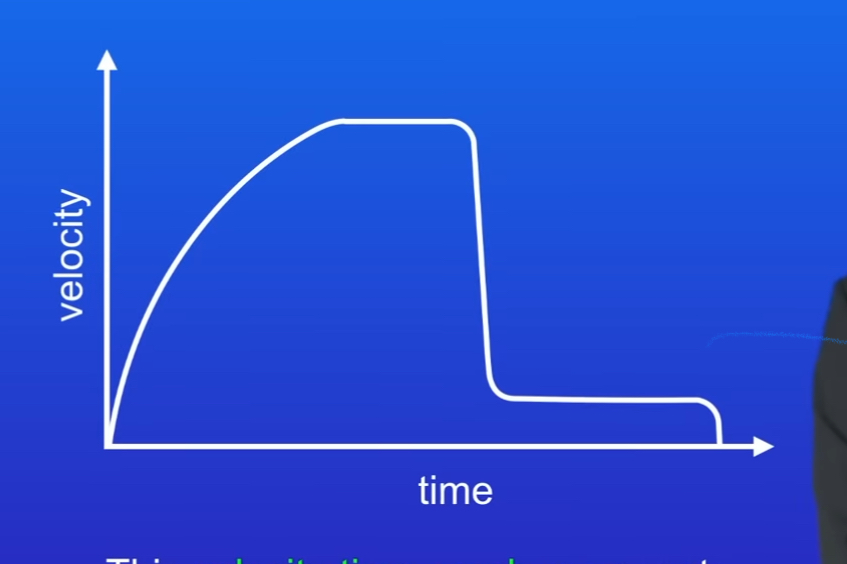Laws of motion
What is Newton’s first law
If the resultant force acting on a stationary object is zero then the object will remain stationary
-If resultant force acting on a moving object is zero, then the object will continue moving in the same velocity
When will a velocity of an object change
If a resultant force is acting on object
1/16
There's no tags or description
Looks like no tags are added yet.
Name | Mastery | Learn | Test | Matching | Spaced |
|---|
No study sessions yet.
17 Terms
What is Newton’s first law
If the resultant force acting on a stationary object is zero then the object will remain stationary
-If resultant force acting on a moving object is zero, then the object will continue moving in the same velocity
When will a velocity of an object change
If a resultant force is acting on object
What happens if a resultant force of 50N act on right on stationary object
Cause object is accelerate to the right
What happens if we object is moving at constant speed but resultant force 50N acts on left
It causes object to decelerate(slow down)
How can a resultant force cause an object to change direction
-A resultant force acting on the bottom of object caused object to accelerate upwards
What is Newtons Second Law of motion
The acceleration of an object is proportional to the resultant force acting on the object and inversely proportional to the mass of the object
The larger the resultant force acting on an object
The more the object accelerates
The larger the mass of an object
The lesser it will accelerate
How to calculate force needed to accelerate an object?
Force(N) = Mass(kg) X Acceleration(m/s²)
Estimate for a car in main road and motor wag
Main road is 13m/s
Motorway 30 m/s
What is Inertia
Objects will stay still and keep the same motion unless a resultant force is applied
What is inertial mass
Meaure how difficult it is to change the velocity of an object
So just the ratio of force over acceleration
What will an object with a large inertial mass needs
A larger force to produce a given acceleration than an object with a smaller inertial mass
What is newtons third Law
Whenever two objects interact the forces they exert on each other are equal and opposite
How is Newton’s third law used when a man is pushing against a wall
As the man pushes the wall, there is a normal contact force acting back on him. These two forces are the same size. As the man applied a force and pushed the wall, the wall ‘pushed back’ on him either an equal force
Describe forces acting on skydiver as it jumps out of plane
1)As soon as it jumps out of the plane, the only force acting is weight which is due to gravity and this will not change in journey.So sky diver experiences a resultant force acting downwards so they accelerate towards the ground
2)As they fall skydiver experiences friction with air molecules which is called air resistance and that acts upwards. Weight is still greater than the air resistance so the skydiver continues to accelerate towards the ground
3)As skydiver velocity increases the air resistance also increases and at some point air resistance balances weight so now there’s no resultant force so velocity stays constant so sky diver had reached terminal velocity
4)Skydiver then opens parachute so surface area increases and air resistance increases which is now greater than weight so resultant force acts upwards
5)Skydiver will now decelerate. Now that velocity has decreased, air resistance decreases and air resistance will balance weight so resultant force is zero and velocity is constant
6)Now skydiver falls at lower terminal velocity and safe for him to hit ground

Describe motion of skydiver in graph
-Only force is weight as soon as they jump and then it accelerates
-As skydiver falls air resistance acts upwards but weight is till greater do skydiver will accelerate
-As velocity increases air resistance increases but when air resistance is zero resultant force is zero and we have terminal velocity)shown when graph starts to turn flat)
-Skydiver opens parachute and air resistance increases(shown when graph starts to fall)
-Air resistance is greater than weight so resultant force acts upwards.
-Skydiver decelerates(shown at middle of when graph falls) but at lower velocity. Air resistance also decreases
-When air resistance balances the weight resultant force is zero so velocity is constant and thus is lower terminal velocity(shown when goes flat at bottom